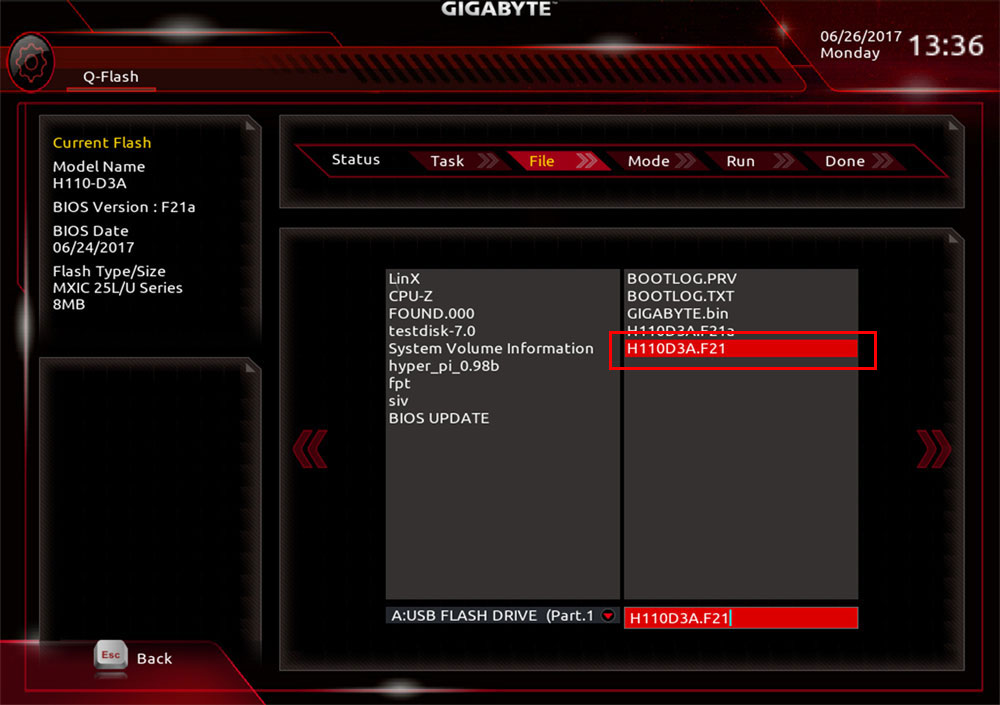
The Gigabyte Motherboard BIOS Key: A Comprehensive Guide to Unlocking Your System’s Potential
When it comes to maximizing the performance and functionality of your Gigabyte motherboard, understanding how to access and navigate the BIOS is crucial. The BIOS (Basic Input/Output System) is a firmware that allows you to configure various hardware settings and manage your system’s startup process. In this blog article, we will delve into the world of Gigabyte motherboard BIOS and provide you with a detailed guide on how to access it using the BIOS key.
In the following sections, we will explore ten key aspects of the Gigabyte motherboard BIOS, including its importance, the BIOS key combinations for different Gigabyte motherboard models, the main BIOS menu options, and advanced features that can be tweaked to enhance your system’s performance. Whether you are a beginner or an experienced user, this comprehensive guide will equip you with the knowledge and skills necessary to navigate and utilize the Gigabyte motherboard BIOS effectively.
Section 1: Understanding the Importance of the Gigabyte Motherboard BIOS
This section will highlight the significance of the Gigabyte motherboard BIOS in optimizing system performance, enabling hardware compatibility, and troubleshooting common issues. It will emphasize the role of the BIOS in controlling key hardware components, such as the CPU, RAM, and storage devices, and explain how it impacts system stability and overall functionality.
Section 2: Identifying the BIOS Key Combinations for Gigabyte Motherboards
In this section, we will provide an extensive list of BIOS key combinations for various Gigabyte motherboard models. Each Gigabyte motherboard typically has a specific key or combination of keys that need to be pressed during system startup to access the BIOS. We will cover both traditional and UEFI BIOS key combinations, ensuring compatibility across different Gigabyte motherboard generations.
Section 3: Navigating the Main BIOS Menu Options
Here, we will explore the main menu options within the Gigabyte motherboard BIOS. From basic settings like date and time configuration to more advanced options like boot sequence prioritization and overclocking, we will provide an in-depth overview of each menu category and its sub-options. This section will empower you to make informed decisions while customizing your BIOS settings.
Section 4: Advanced BIOS Features for Performance Enhancement
Unlocking the full potential of your Gigabyte motherboard requires understanding and utilizing its advanced BIOS features. This section will delve into overclocking, power management, voltage control, and other performance-enhancing options available within the Gigabyte motherboard BIOS. We will explain the benefits, risks, and best practices associated with these features to help you make the most out of your system.
Section 5: Troubleshooting Common BIOS Issues
Even with its robust functionality, the Gigabyte motherboard BIOS can occasionally present challenges. This section will address common BIOS issues and provide troubleshooting tips to overcome them. Whether you encounter booting problems, unrecognized hardware, or compatibility conflicts, we will guide you through step-by-step solutions to restore your system’s stability.
Section 6: Updating the BIOS Firmware Safely
Regularly updating your Gigabyte motherboard BIOS firmware is essential to ensure compatibility with the latest hardware and software advancements. In this section, we will explain the importance of BIOS updates, guiding you through the process of safely updating the BIOS firmware using Gigabyte’s official tools and methods. We will also cover precautions and best practices to minimize the risks associated with BIOS updates.
Section 7: Backing Up and Restoring BIOS Settings
Customizing your Gigabyte motherboard BIOS settings can be a time-consuming process. In this section, we will discuss the significance of backing up your BIOS settings and provide step-by-step instructions on how to create a backup. Additionally, we will explain how to restore your BIOS settings from a backup, ensuring that you can easily revert to a previous configuration if needed.
Section 8: BIOS Security Measures and Best Practices
The Gigabyte motherboard BIOS contains critical system-level settings and configurations. This section will delve into the importance of BIOS security measures and best practices to protect your system from unauthorized access and malicious attacks. We will explore options like setting up BIOS passwords, enabling secure boot, and implementing other security features available within the Gigabyte motherboard BIOS.
Section 9: Exploring BIOS Diagnostic and Monitoring Tools
Monitoring your system’s vital statistics and diagnosing hardware issues is made easier with the diagnostic and monitoring tools available within the Gigabyte motherboard BIOS. This section will introduce you to these tools, including temperature and voltage monitoring, SMART status checks, and system health indicators. Understanding these tools will empower you to proactively identify and resolve potential hardware problems.
Section 10: Gigabyte Motherboard BIOS and Future Technologies
As technology continues to evolve, so does the Gigabyte motherboard BIOS. In this final section, we will discuss the future of Gigabyte motherboard BIOS and its adaptation to emerging technologies. We will explore trends like UEFI advancements, support for new storage technologies, and other potential developments that will shape the BIOS landscape in the coming years.
Conclusion:
In conclusion, the Gigabyte motherboard BIOS is a powerful tool that allows you to unlock your system’s potential and optimize its performance. This comprehensive guide has provided you with a detailed understanding of the Gigabyte motherboard BIOS, from accessing it using the BIOS key to exploring its advanced features. By following the best practices and troubleshooting tips outlined in this article, you can confidently navigate and harness the full capabilities of your Gigabyte motherboard BIOS.
Remember, the BIOS is an integral part of your system, and making informed decisions while configuring it can lead to enhanced stability, compatibility, and performance. Whether you are an avid gamer, a professional content creator, or a casual user, mastering the Gigabyte motherboard BIOS will empower you to make the most out of your system and ensure a seamless computing experience.